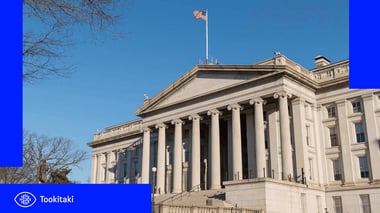Why Do We Need Anti Money Laundering (AML) In the Insurance Sector?
Financial crime has been recorded in the insurance industry across the world. According to a research done by PWC in 2018, 62 percent of those surveyed have been victims of financial fraud in the preceding two years. Even if most insurance company products are not the primary target for money launderers/criminals, they are nonetheless at danger of being used as a vehicle for laundering money, according to the Financial Task Force (FATF), an intergovernmental regulatory agency charged with combating money laundering.
Because of the large flows of funds into and out of their businesses, life insurance companies are particularly vulnerable to money laundering. Most life insurance companies offer highly flexible policies and investment products that allow customers to deposit and then withdraw large sums of money with only a minor loss in value.
Criminals, for example, utilise their illegal cash to purchase life insurance annuity contracts.
Alternatively, the opposite scenario occurs, when they remove money from life insurance contracts to support other unlawful operations. Insurance company agents/brokers are frequently ignorant of such bogus circumstances and hence fall prey to money laundering scams.
How do Governments and International organisations respond?
Governments and international organisations respond by enacting a variety of anti-money laundering life insurance legislation and issuing life insurance sanctions lists. With fines and jail sentences as part of the compliance penalty, life insurance companies should make sure they understand their duties and how to apply them as part of their AML strategy.
Insurance firms are classified as “companies/financial institutions” under the Bank Secrecy Act (BSA) of 1970. This implies they must design and enforce compliance requirements in the same way that other businesses and financial institutions do. The insurance industry’s compliance programme encompasses annuity contracts, life insurance, and other products. The statute mandates that insurance companies keep relevant documents and produce reports to aid law enforcement in the investigation of criminal conduct and other financial crimes such as tax fraud.
What Are The Regulations For AML Life Insurance?
The majority of financial authorities have risk-based transaction monitoring regulations in place for insurance firms operating inside their countries. The Bank Secrecy Act (BSA) in the United States defines a set of “covered items” for which transaction monitoring is required:
- Life insurance plans that are permanent (excluding group life insurance policies)
- Contracts for annuities (excluding group annuity contracts)
- Any insurance policy that has a cash value or investment component
Suspicious Activity Reports: Insurance companies are required under the BSA to send questionable activity reports (SARs) to the Financial Crimes Enforcement Network (FinCEN) when they discover suspicious transactions involving one of the covered products. FinCEN creates a SAR form exclusively for insurance firms; when filling out the form, insurers must provide the following information:
FinCEN has established a $5,000 threshold for suspicious transactions that require SAR filing. Insurers should also be aware of a number of warning signs that might suggest money laundering or terrorism funding. The following are some of the red flags that should be looked out for during a transaction:
- Excessive insurance
- Excessive or unusual cash borrowing against policy/annuity
- Proceeds sent to or received from unrelated third party
- Suspicious life settlement sales insurance (e.g. STOLI’s, Viaticals)
- Suspicious termination of policy or contract at the cost of the customer/ a third party
- Unclear or no insurable interest (does not reflect customer’s needs)
- Unusual payment methods (cash, or structured amounts)
- Customer reluctance to provide identification
The Financial Action Task Force (FATF) is an international organisation that develops anti-money laundering insurance sector advice for its member governments to follow (as a member state, the US enacts FATF requirements in the BSA). The FATF collaborates with private insurance firms to ensure that its laws are effective and current.
Financial authorities in Asia-Pacific are similarly concerned about the danger presented by life insurance products. Insurance sector rules in APAC, like those in other jurisdictions, are risk-based and include a variety of transaction monitoring requirements. The Monetary Authority of Singapore (MAS), for example, provides special regulations for insurers in Notice 314 on the Prevention of Money Laundering and Countering Terrorism Financing.
Insurance firms must comply with targeted financial sanctions imposed by international and governmental agencies on consumers, corporations, and persons. In practise, this implies that insurance companies are limited or forbidden from providing life insurance to consumers who appear on government sanction lists.
As a consequence, insurers must implement sanctions screening mechanisms in their anti-money laundering systems in order to identify customers who appear on these lists. When clients (policyholders or beneficiaries) are placed on sanctions lists, insurance firms must take steps to halt transactions or freeze assets, as well as notify the necessary authorities.
There may be overlap between multiple sanctions lists because numerous foreign authorities have the same AML/CFT goals. The Office of Foreign Assets Control (OFAC) sanctions list, as well as the UN Security Council sanctions list, are implemented in the United States.
The following are important considerations for insurers when developing a sanctions compliance policy:
- Continuous screening: Companies must make sure that its sanctions programme screens clients on a regular basis to keep up with changing risk profiles.
- Risk based: Firms must choose sanctions watchlists based on the risk posed by their customers and the areas in which they do business.
- Process of confirmation: When a client is matched to a sanctions list, companies should have a method in place to verify the customer’s identity and placement on the list.
- Identification of mistakes: Sanctions programmes should have fail-safe features in place to discover staff mistakes or even purposeful attempts to evade the screening process.
How to Practice AML in Insurance Companies?
While enterprises and insurance companies are obligated to follow the AML compliance programme, they should also ensure that they are not responsible for any money laundering offences. Money laundering entails a series of steps that may or may not be as closely related with insurance businesses as they are with other financial industries.
In other situations, though, their involvement may be deemed a crime. For example, if an insurance business joins in or interacts in unlawful funds while knowing their real source, they are committing money laundering. Knowing the nature of the unlawful profits and yet deciding to conduct any transactions with the funds indicates that the individual or firm is unaware of the issue and decides to act without reporting or investigating the illicit funds case. If the corporation chooses to escalate the case, it will be regarded a crime if an individual is suspected of being involved in criminal activities or possesses money that are illicit proceeds.
Other than allowing transactions, if the company or an employee/agent chooses to allow payment with the illicit money while having full knowledge and not investigating the source of funds, then they will be held accountable. This means that the company should establish best practices of KYC compliance regulations, to prevent such scenarios and the integrity of the company from being harmed.
The employees should start with the basic knowledge of the client, such as their name, DOB, and home address. If the client is revealed to be a Politically Exposed Person (PEP), then they should be screened against available databases for any link to criminal activity or corruption. In case of a scenario where the employee is suspicious of the customer, then they can report the suspicious individual with their details to the senior management as well as the compliance officer of the firm, both of whom can further connect with regulatory agencies.
If there are any violations of the BSA regulations, then those involved (individual/company) will incur severe criminal or civil penalties and risk of reputation. There will be additional regulatory enforcement actions by the Treasury, FinCEN, and other regulatory bodies. In order to prevent such violations, the insurance companies must develop an effective BSA/AML compliance programme to mitigate any possible ML risks and protect the company from engaging in any criminal activity.
How To Build An Anti-Money Laundering (AML) Compliance Programme for Insurance Companies
The insurance firm must follow the following rules in order to establish a complete, risk-based compliance programme with effective processes and procedures that meet with AML regulatory requirements:
- The insurance company should develop risk-based policies and processes along with internal controls in order to comply with BSA requirements for recordkeeping and reporting
- They should designate a compliance/BSA officer who ensures daily compliance, checks the effectiveness of the BSA programme, trains employees on an ongoing basis, and regularly updates the programme when required
- The ongoing training includes providing training about respective duties to the company’s agents, associates, and appropriate employees
- Independent testing of the BSA program is completed by the officer at regular intervals
- To get the customer’s required data that is necessary for the BSA/AML compliance programme
- To run regular risk assessments of the insurance company’s covered products
The Role of the Insurance Company when it comes to Anti-money Laundering (AML) Regulations
The following are the role and responsibilities of the insurance company to maintain AML/BSA compliance within the organisation:
Role and Responsibility of:
- Board Members: The company’s board faculty will supervise the senior manager and guide them accordingly as to how to comply with the BSA regulatory requirements and establish the policies. The BSA officer will share the compliance reports, based on the results of independent testing and risk assessments, with the board members, who will review them on a regular basis. It is the board’s responsibility to assign necessary resources and funding for implementing the BSA compliance function in the company.
- Senior Manager: The senior manager’s duty is to execute the compliance program efficiently, along with the appropriate policies and processes. The senior manager works above the BSA officer and overlooks the necessary procedures and internal controls that are being operated successfully. The manager will set the tone for the company to follow the guidelines. These are necessary for compliance and to maintain a compliance culture throughout the company.
The role of the BSA Officer in insurance and AML
It is the BSA officer’s responsibility to:
- Establish and implement the compliance programme in the company.
- They need to develop the BSA initiative and update the compliance programme when it is required and present the updated programme to the board for approval.
- They must review the risk assessment along with the internal controls that will be added to the programme
- They will assess the new requirements for compliance, along with standards and procedures, and make the necessary changes according to the existing programme.
- They will ensure compliance with the BSA/AML regulatory requirements for reporting cash transactions, cross-border shipping, and transferring currency or any other financial asset/instruments
- They need to investigate any suspicious activity and file the SARs when it is necessary. They also need to review the process for identifying any suspicious activity within the company
- They must ensure that compliance training is provided to the appropriate employees, board members, and senior management.
- They need to recommend the necessary resources and technology for maintaining compliance in the organisation.
- They must ensure that CDD processes include all the customer’s relevant data, along with the necessary documents, under the BSA compliance.
Why AML Compliance is Important for Insurers
Failure to comply with regulatory requirements can be disastrous for insurance companies. Breaches can lead to enforcement actions including fines, penalties and sanctions. In addition to the monetary losses, including a steep fall in stock prices in the case of a listed company, institutions would lose market reputation, which they took several years to build up.
Therefore, it is important for insurance companies to have proper compliance programmes and manage them effectively. AML compliance officers are indispensable staff for institutions as they help manage compliance programmes and mitigate compliance risk.
In the present times, when technological changes have significantly changed the financial crime landscape, institutions should make use of the services of skilled BSA officers and modern technology solutions. AML compliance software such as Tookitaki Anti-Money Laundering Suite, developed in line with changing criminal behaviour, makes the work of AML compliance officers easier and more secure. Our AML software helps mitigate emerging AML risks and improves the efficiency of compliance staff.
For more information about our AML solutions, speak to one of our experts.
Anti-Financial Crime Compliance with Tookitaki?
.png?width=250&height=104&name=PNG%20-%20Montserrat%20LOGO%20-%20a%20Thunes%20company%20(White).png)
-1.png?width=200&height=83&name=PNG%20-%20Montserrat%20LOGO%20-%20a%20Thunes%20company%20(White)-1.png)



